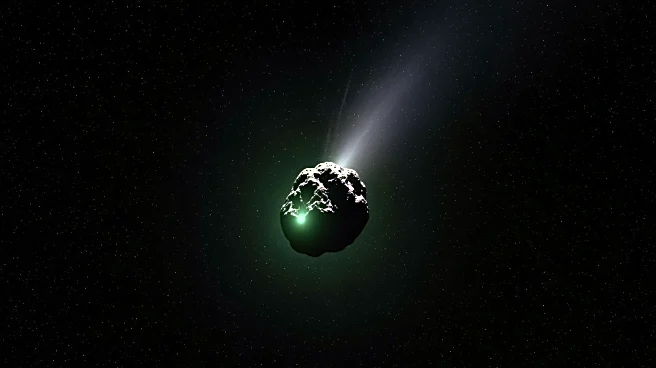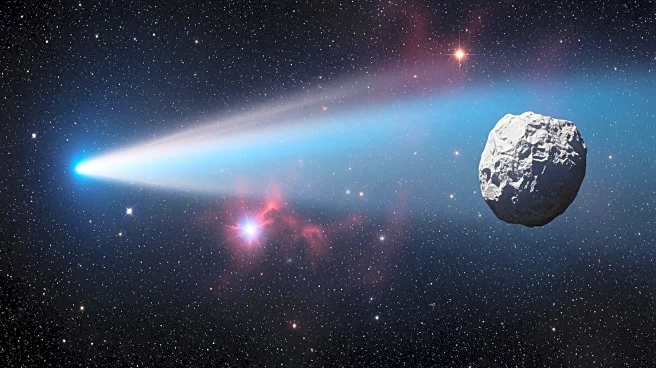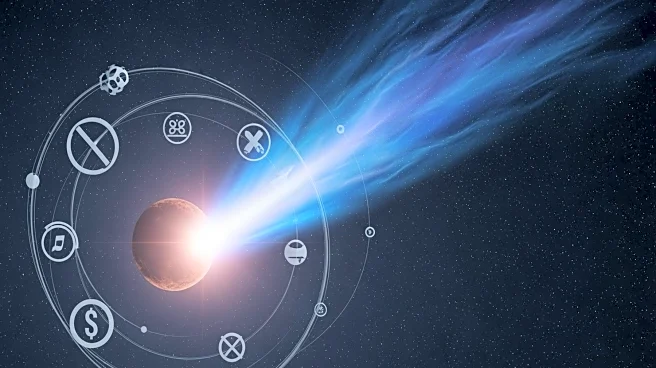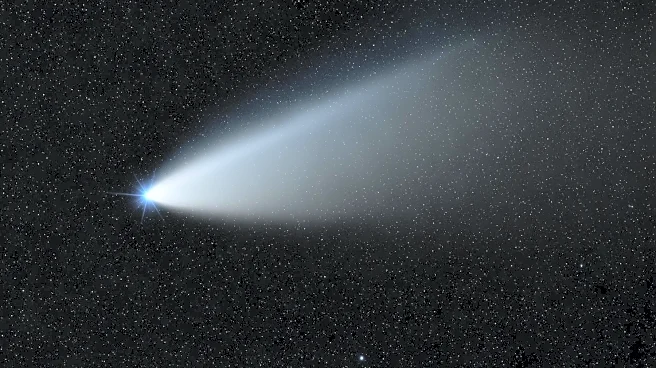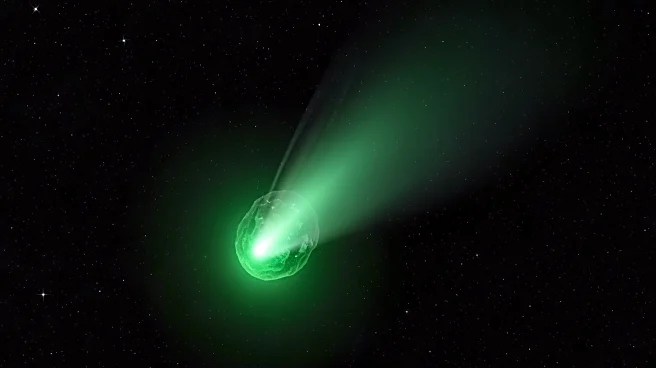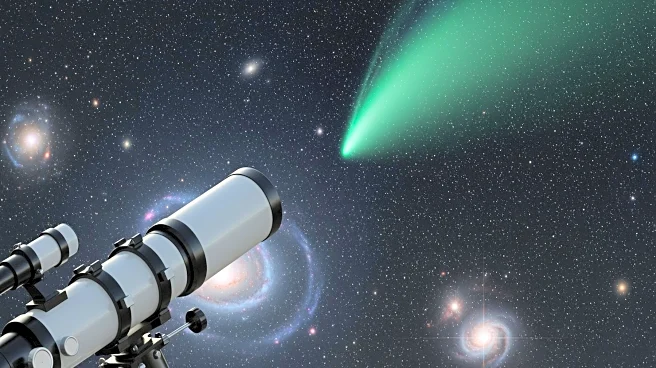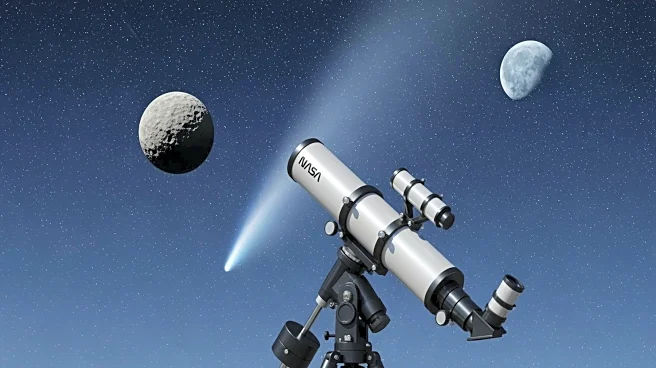What's Happening?
The interstellar object 3I/ATLAS, which recently garnered attention for allegedly changing colors during its approach to the Sun, did not undergo any real color transformation, according to NASA-linked
scientists. Reports had suggested the comet shifted from red to blue-green hues, sparking speculation about unusual cosmic activity. 3I/ATLAS, discovered in July, is the third confirmed interstellar object to enter our solar system, following 'Oumuamua in 2017 and 2I/Borisov in 2019. As it made its closest approach to the Sun on October 30, three solar observatories captured images showing a significant brightening. However, Qicheng Zhang, a postdoctoral fellow at the Lowell Observatory, clarified that the reports of color change are misleading. The observed blue-green tint is due to the natural composition and behavior of the comet's gas coma, which emits a bluish-green light when interacting with sunlight.
Why It's Important?
The clarification regarding 3I/ATLAS's color is significant as it dispels misconceptions about the comet's behavior, emphasizing the importance of accurate scientific communication. As an interstellar object, 3I/ATLAS offers a rare opportunity to study materials formed around another star, potentially providing insights into the building blocks of exoplanetary systems. Understanding the dynamics of such objects traveling through interstellar space can enhance knowledge about the universe's composition and the processes governing celestial bodies. The comet's journey and characteristics could inform future research and exploration strategies, impacting scientific approaches to studying interstellar phenomena.
What's Next?
Scientists will continue to monitor 3I/ATLAS as it travels through the solar system, gathering data that could shed light on its origin and composition. The comet's unusual path and characteristics may prompt further studies into interstellar objects, potentially leading to new discoveries about the materials and processes involved in their formation. Researchers may also explore the implications of 3I/ATLAS's behavior for understanding the dynamics of objects from other star systems, contributing to broader astronomical knowledge.
Beyond the Headlines
The incident highlights the challenges of interpreting astronomical phenomena and the importance of clear communication between scientists and the public. Misinterpretations can lead to misconceptions, affecting public understanding of scientific events. The study of interstellar objects like 3I/ATLAS also raises questions about the ethical considerations of space exploration and the potential impact of human activities on celestial bodies.


